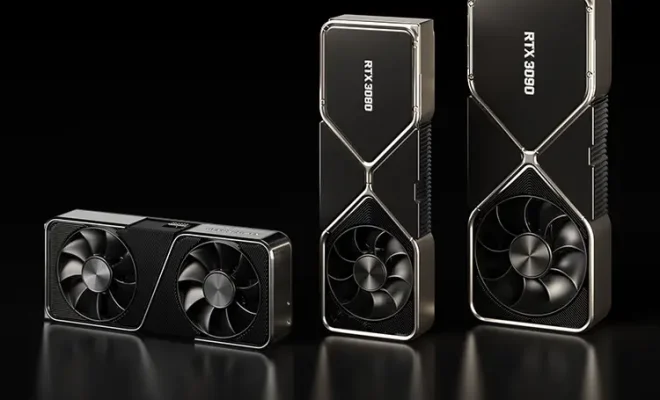Could NVIDIA’s Stockpile of 5nm Wafers Cause GPU Price Drops?

NVIDIA, the leading graphics processing unit (GPU) manufacturer, has recently committed to stockpiling 5nm wafers to increase its production capacity of next-generation GPUs. The move marks a significant investment into the future of GPU technology, and could potentially lead to price drops in the near future.
With the current global chip shortage, the demand for GPUs has skyrocketed, causing prices to surge. The shortage has been attributed to several factors, including COVID-19 lockdowns, supply chain disruptions, and increased demand for digital devices due to the pandemic. As a result, the prices of NVIDIA’s graphics cards have increased by up to 300% in some cases, making them unaffordable for many consumers.
However, the stockpiling of 5nm wafers by NVIDIA could help to alleviate this problem. NVIDIA’s CEO, Jensen Huang, has stated that their goal is to “increase capacity and ensure graphics cards are available to gamers at MSRP” (Manufacturer Suggested Retail Price). By increasing their production capacity, NVIDIA will have more GPUs available in the market, which could reduce the prices of their products.
5nm wafers are an important component in the manufacturing of next-generation GPUs. They offer several key advantages over 7nm and 14nm wafers, including improved power efficiency and increased processing power. This means that GPUs manufactured using 5nm wafers will be more powerful and consume less energy, making them more attractive to consumers.
Moreover, NVIDIA’s investment in 5nm wafers could have a ripple effect throughout the industry. Other GPU manufacturers may follow suit and increase their production capacity, leading to increased competition and potentially lower prices for consumers.
However, it is important to note that the effects of NVIDIA’s stockpiling of 5nm wafers may not be felt immediately. The current global chip shortage has resulted in a backlog of orders, and it may take some time for the increased production capacity to catch up with demand.
In conclusion, NVIDIA’s decision to stockpile 5nm wafers could potentially lead to lower GPU prices in the future. By increasing their production capacity, NVIDIA will have more GPUs available in the market, which could reduce the prices of their products. This investment could also have a positive impact on the industry as a whole, leading to increased competition and potentially lower prices for consumers. However, it may take some time for the effects to be felt, and the market will need to adjust to the increased supply.




